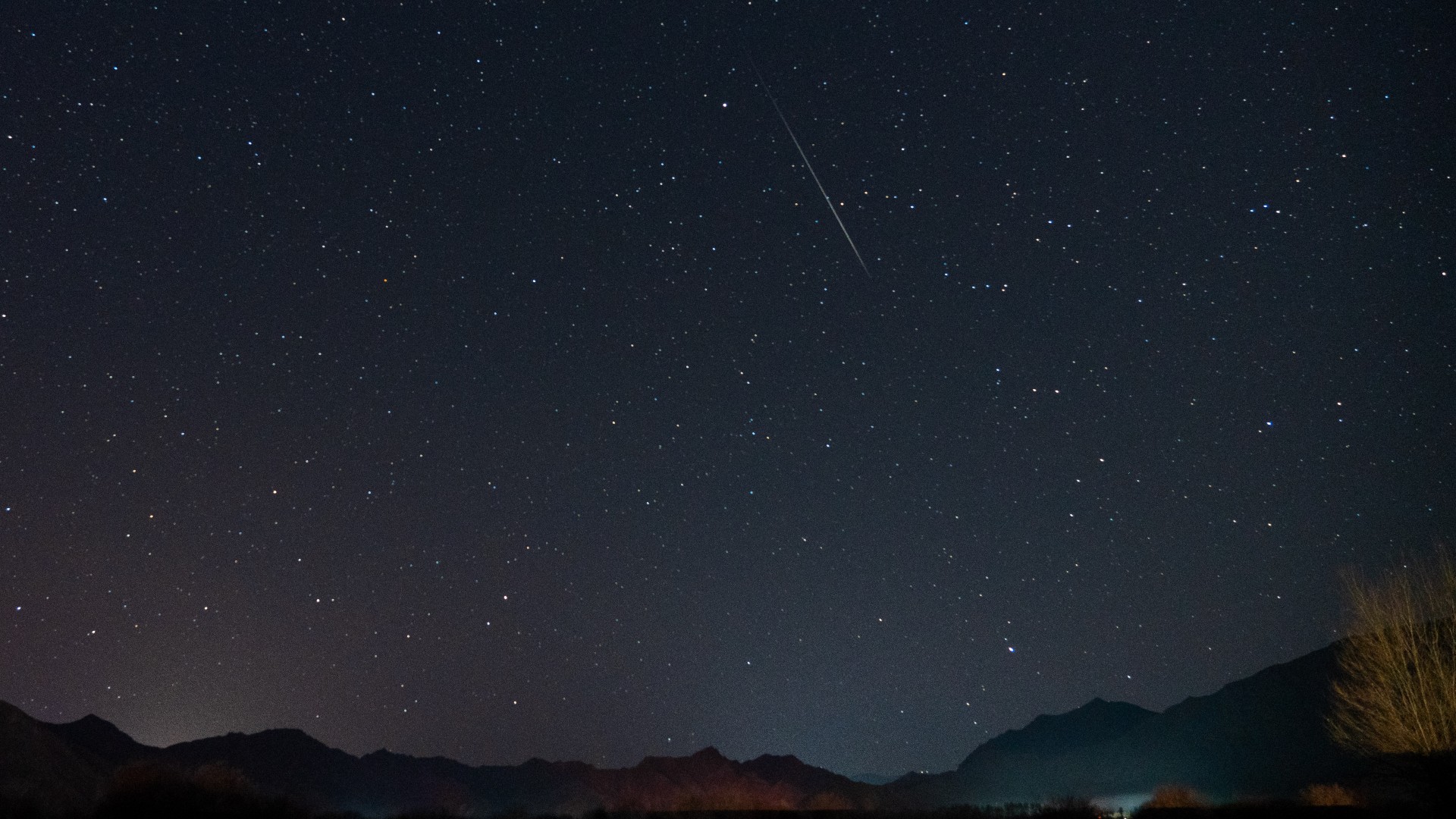Ursid meteor shower shines with ideal dark sky conditions this year

When meteor enthusiasts think of the month of December, they immediately conjure up visions of the Geminids, which over the years has evolved into the most reliable of the dozen or so annual meteor displays that take place.
But this year, a bright waning gibbous moon all but wrecked the Geminid meteor shower by lighting up the late-night sky and squelching all but the brightest meteor streaks.
However, as a "consolation prize," there is another December spectacle that in contrast, hardly gets any notice at all: The Ursid meteor shower. This year, the peak of this meteor display is due during the overnight hours of Thursday night, Dec. 22, into the morning hours of Friday, Dec. 23.
Related: Meteor showers 2022-2023: Where, when and how to see them
Often neglected
The Ursids (sometimes also referred to as the "Umids") are so named because they appear to fan out from the vicinity of the bright orange star Kochab, in the constellation of Ursa Minor, the Little Bear. Kochab is the brighter of the two outer stars in the bowl of the Little Dipper (the other being Pherkad), that seem to march in a circle like sentries around Polaris, the North Star.
The fact that Kochab is positioned so near to the north pole of the sky means that it never sets for most viewers in the Northern Hemisphere. And since the Ursids seem to fan out from this particular region of the sky, means that you can look for these medium-speed meteors all through the night if you care to. The fact that they reach their peak during the overnight hours of Dec. 22-23 is also good news regarding the moon.
While the moon "muscled in" on the peak of the Geminids near full phase, it will be at new moon phase on Dec. 23 when the Ursids reach their peak. So, it won't provide any hindrance at all for meteor watching.
Breaking space news, the latest updates on rocket launches, skywatching events and more!
This is indeed a fortunate circumstance because the Ursids "badly need observing," according to the British Astronomical Association.
Read more: Look up! The Ursid meteor shower starts tonight (Dec. 17)
UnBEARable viewing circumstances

Want to check out Ursa Minor up close? We recommend the Celestron Astro Fi 102 as the top pick in our best beginner's telescope guide.
That observers have neglected the Ursids is not surprising. They almost always coincide with the winter solstice, which means braving cold temperatures if one wants to catch them in the sky. Furthermore, in contrast to the Geminids, which typically produce prolific numbers of bright meteors during the course of a single hour, the usual Ursid rate is considerably less, producing only about five to 10 moderately faint meteors per hour at their peak. They are actually the dusty material shed by comet 8P/Tuttle, which circles the sun in a 13.6-year orbit and is not due to return until March 2035.
Surprise!
On occasion, the Earth has interacted with a dense, narrow stream of particles shed by this comet, which has caused brief outbursts of Ursid meteors numbering in the dozens per hour, such as in 1945 and 1986; counts reached 30 per hour in 2000 and again during the years 2006 through 2008. According to recent calculations made by Dutch-American meteor expert Peter Jenniskens and his colleague, the late Finnish calculator, Esko Lyytinen, similar enhancements may be expected in 2028 and again in 2030.
But unfortunately, no such interaction is expected this year.
Then again, you might want to periodically check the sky on Thursday night, just in case the "Little Bear’s meteor shower" decides to unexpectedly come out of winter hibernation.
Joe Rao serves as an instructor and guest lecturer at New York's Hayden Planetarium. He writes about astronomy for Natural History magazine, the Farmers' Almanac and other publications. Follow us on Twitter @Spacedotcom and on Facebook.

Joe Rao is Space.com's skywatching columnist, as well as a veteran meteorologist and eclipse chaser who also serves as an instructor and guest lecturer at New York's Hayden Planetarium. He writes about astronomy for Natural History magazine, Sky & Telescope and other publications. Joe is an 8-time Emmy-nominated meteorologist who served the Putnam Valley region of New York for over 21 years. You can find him on Twitter and YouTube tracking lunar and solar eclipses, meteor showers and more. To find out Joe's latest project, visit him on Twitter.

